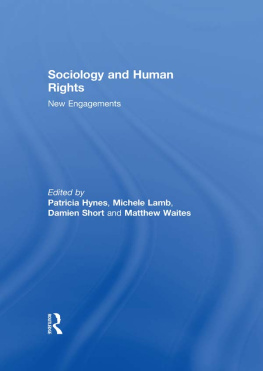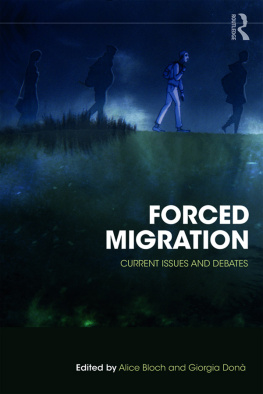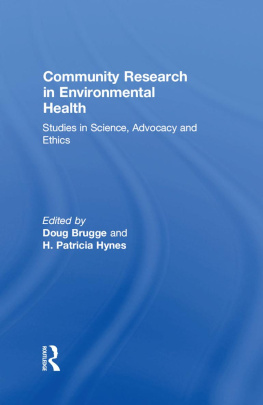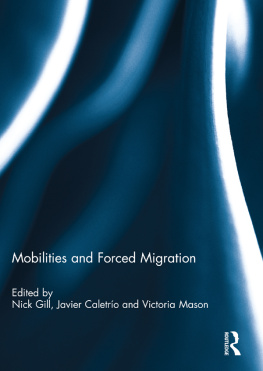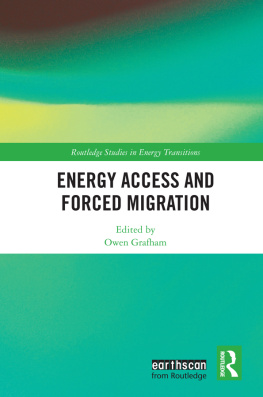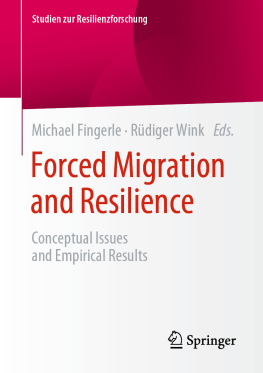Patricia Hynes Introducing Forced Migration is an eclectic and extremely accessible exploration of this widely deployed but complex concept. Based on a rich variety of sources summaries of key thinkers, key websites, extensive research and literature references, legal instruments, case studies the book provides a comprehensive foundational understanding of forced migration, constituting a valuable resource for scholars, students and informed laypeople.
Roger Zetter, Professor Emeritus in Refugee Studies, Refugee Studies Centre, University of Oxford, UK
The book is a first-rate introduction to the subject of forced migration. It not only clarifies different terms, concepts and approaches, but also provides concise discussion, backed by case studies, of the legal, social and political dimensions of the principal categories of forced migrants viz., refugees, internally displaced persons and trafficked persons. I would recommend the book to anyone wanting to understand one of the most important issues of our times.
B.S. Chimni, Distinguished Professor of International Law, O.P. Jindal Global University, India
If you want a comprehensive resource on forced migration, Introducing Forced Migration is the textbook for you. Hynes offers critical definitions and policy perspectives that cover topics from the distinctions between refugees and asylum-seekers to human trafficking and displaced children. This book helpfully takes the reader through concepts and complexities of some of the most pressing migration concerns of today, including policy failures pertaining to the Rohingya and the Mediterranean crisis.
Cathy Zimmerman, Professor Migration, Violence and Exploitation, London School of Hygiene & Tropical Medicine, UK
This is a truly remarkable book that manages to introduce not only the complex issues of refugees, asylum seekers, internally displaced people, the trafficked and others under the heading of forced migration, but also brings in the key thinkers and writers on these subjects. It does so in a manner that is beautifully clear and accessible to students and a wider audience. The organisation of the material and the maps, graphs, photographs and other graphics are superb. Up to date, it is a brilliant introduction to one of the most pressing issues of the 21st century.
Tony Kushner, Professor, Parkes Institute, University of Southampton, UK, and author of The Holocaust and Forced Migration, 2017
With human stories and an appeal for social justice and human rights at its heart, this is a book that unravels complexities of definition, reveals misleading simplicity behind labels and counters popular and media-driven assumptions. It demonstrates how flawed international policy responses are based on little understanding. Essential reading for students, researchers, policy-makers and practitioners, the book critiques how the international community has responded. It signposts the need for political courage, vision and collaboration to create a context where hope can replace fear and diverse peoples can be protected from abuse, and their wellbeing enhanced in safer places.
Michael Preston-Shoot, Emeritus Professor of Social Work, University of Bedfordshire, UK
Introducing Forced Migration
At a time when global debates about the movement of people have never been more heated, this book provides readers with an accessible, student-friendly guide to the subject of forced migration.
Readers of this book will learn who forced migrants are, where they are and why international protection is critical in a world of increasingly restrictive legislation and policy. The book outlines key definitions, ideas, concepts, points for discussion, theories and case studies of the various forms of forced migration. In addition to this technical grounding, the book also signposts further reading and provides handy Key Thinker boxes to summarise the work of the fields most influential academics. Drawing on decades of experience both in the classroom and in the field, this book invites readers to question how labels and definitions are used in legal, policy and practice responses, and to engage in a richer understanding of the lives and realities of forced migrants on the ground.
Perfect for undergraduate and postgraduate teaching in courses related to migration and diaspora studies, Introducing Forced Migration will also be valuable to policy-makers, practitioners, journalists, volunteers and aid workers working with refugees, the internally displaced and those who have experienced trafficking.
Patricia Hynes is a Reader in Forced Migration in the School of Applied Social Studies, University of Bedfordshire, UK.
Rethinking Development
Rethinking Development offers accessible and thought-provoking overviews of contemporary topics in international development and aid. Providing original empirical and analytical insights, the books in this series push thinking in new directions by challenging current conceptualizations and developing new ones.
This is a dynamic and inspiring series for all those engaged with todays debates surrounding development issues, whether they be students, scholars, policy makers and practitioners internationally. These interdisciplinary books provide an invaluable resource for discussion in advanced undergraduate and postgraduate courses in development studies as well as in anthropology, economics, politics, geography, media studies and sociology.
Rural Development in Practice
Evolving Challenges and Opportunities
Willem van Eekelen
Using Evidence in Policy and Practice
Lessons from Africa
Edited by Ian Goldman and Mine Pabari
Southern-Led Development Finance
Solutions from the Global South
Edited by Diana Barrowclough, Kevin P. Gallagher and Richard Kozul-Wright
Introducing Forced Migration
Patricia Hynes
Mobile Technology and Social Transformations
Access to Knowledge in Global Contexts
Edited by Stefanie Felsberger and Ramesh Subramanian
For more information about this series, please visit: www.routledge.com/Rethinking-Development/book-series/RDVPT




